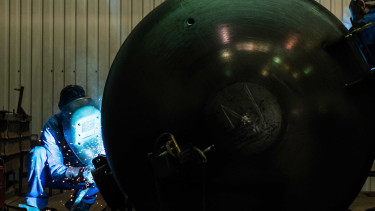Bad news about a rapidly spreading infection in Hungary: vaccine unavailable

Week after week we have reported that the weekly number of new suspected cases of whooping cough is breaking records. This pace of pertussis outbreaks is consistent with the criteria for epidemic spread. We wrote about it in this article, and last week the National Center for Public Health and Pharmacy (NNGYK) acknowledged the new situation.
The new epidemiological situation must be taken seriously because the disease can be fatal, with babies aged 2-3 months being the most at risk, either because they have not yet received the mandatory pertussis vaccine as part of the vaccination programme or have not yet had enough time to develop immunity.
This is why this group of children must be protected, and why the epidemiological authority has issued three recommendations in this regard.
- No visitation or very restricted visitation of newborns for six to eight weeks after birth. Avoid crowded places during this period, as the infant's immune system is still partially unprotected against environmental influences and infections.
- The booster vaccine is recommended for pregnant women because it also protects the newborn.
- The NNGYK reminds the public that vaccination is also recommended for family members living in the same household as the infant and for those involved in the care of the infant.
This has brought the vaccine option back into the spotlight. According to our information, demand for adult pertussis vaccination has increased 5-6-fold this year, but similar trends in demand are being observed across Central Europe.
We have previously reported that the primary product for adults is in short supply nationally (Boostrix Polio), but there is a substitute (Adacel Polio), which is also a prescription drug. This was the product for which demand has increased spectacularly in recent weeks, unsurprisingly given the epidemiological trends, and the supply side has not been able to keep pace with this increase.
This is why adults seeking the vaccine have been experiencing in recent days that, although officially there is no national shortage of the substitute.
in practice, this vaccine is not available or difficult to obtain in pharmacies.
We understand that adults who are interested in receiving the booster shot are those who have a 2-3 month old baby around them and would like to be involved in their care, such as grandparents, but GPs are also trying to inform pregnant women about the possibility of vaccination.
On a positive note, however, we have information that several wholesalers will be receiving this booster vaccine next week and market intelligence suggests that this is a quantity that is expected to meet demand for the rest of the year.
What do you need to know about this vaccine?
The package leaflet for the vaccine, which is currently harder to obtain at times, states that it is used to protect against infectious diseases. The vaccine spurs the body to build up its own immunity against the bacteria or viruses that cause the disease.
This vaccine is used as a booster vaccine to enhance protection against diphtheria, tetanus, pertussis (whooping cough) and poliomyelitis (polio) in children over three years of age, adolescents and adults who have already received the full primary vaccination series.
By using the vaccine during pregnancy, protection against whooping cough is extended to the unborn baby, protecting it against the disease for the first few months of its life.
They also stress that the vaccine contains no live bacteria or viruses and cannot cause any of the infectious diseases it protects against. The vaccine should only be administered by a qualified healthcare professional and in a hospital, clinic or GP practice with the necessary equipment to deal with a possible severe hypersensitivity reaction to the vaccine, which is rare.
In many cases, production cannot keep up with the surge in demand because quantities are pre-committed on a production line and some transitional time is needed for the production process to "make room" for the extra orders (unplanned demand) that arise.
The optimised use of manufacturing capacity is therefore the reason why such temporary manufacturer "backlogs" can occur, not because the manufacturer does not want to meet the demand.
Cover photo (for illustration purposes only): Portfolio








